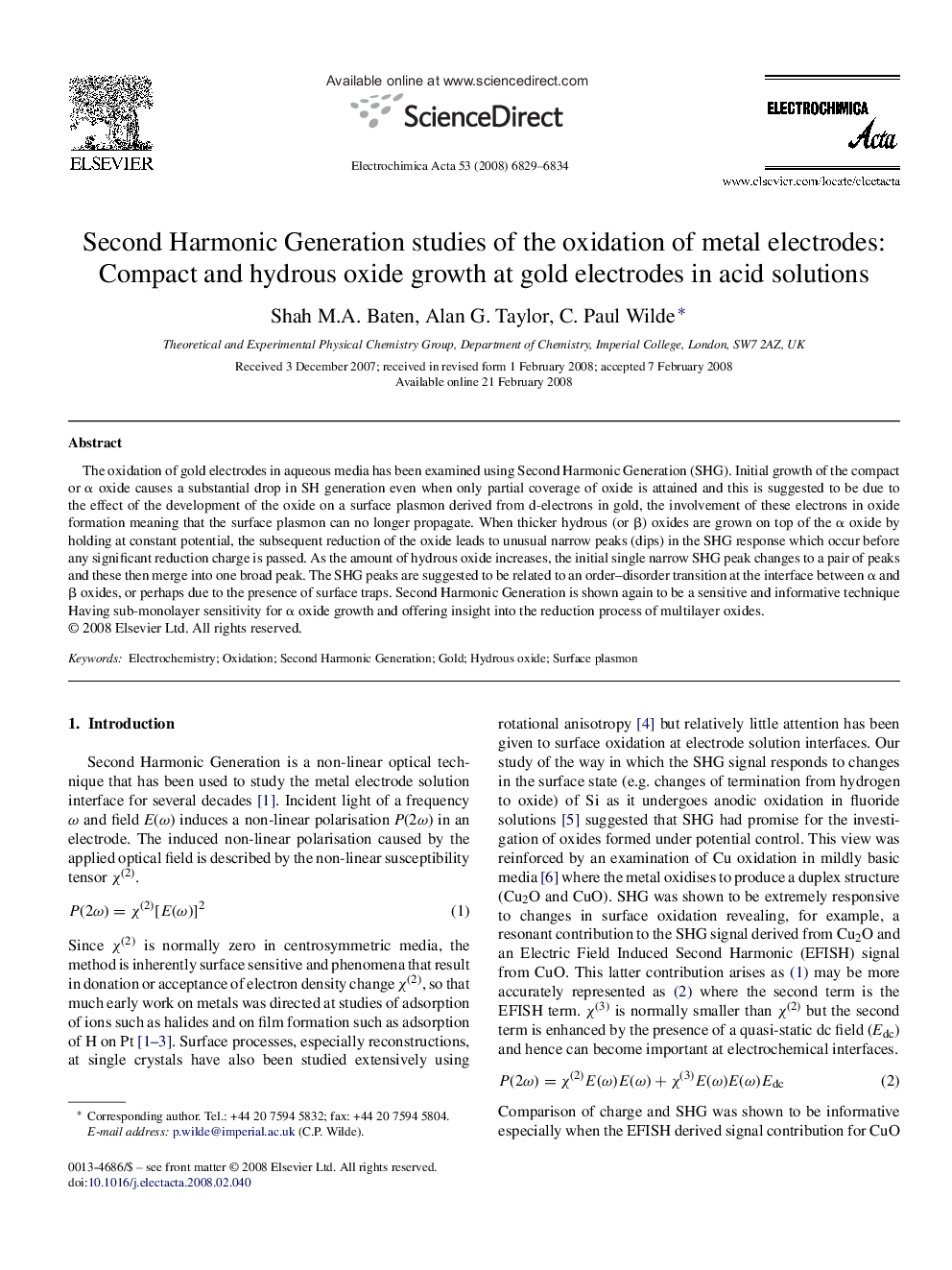| Article ID | Journal | Published Year | Pages | File Type |
|---|---|---|---|---|
| 194719 | Electrochimica Acta | 2008 | 6 Pages |
The oxidation of gold electrodes in aqueous media has been examined using Second Harmonic Generation (SHG). Initial growth of the compact or α oxide causes a substantial drop in SH generation even when only partial coverage of oxide is attained and this is suggested to be due to the effect of the development of the oxide on a surface plasmon derived from d-electrons in gold, the involvement of these electrons in oxide formation meaning that the surface plasmon can no longer propagate. When thicker hydrous (or β) oxides are grown on top of the α oxide by holding at constant potential, the subsequent reduction of the oxide leads to unusual narrow peaks (dips) in the SHG response which occur before any significant reduction charge is passed. As the amount of hydrous oxide increases, the initial single narrow SHG peak changes to a pair of peaks and these then merge into one broad peak. The SHG peaks are suggested to be related to an order–disorder transition at the interface between α and β oxides, or perhaps due to the presence of surface traps. Second Harmonic Generation is shown again to be a sensitive and informative technique Having sub-monolayer sensitivity for α oxide growth and offering insight into the reduction process of multilayer oxides.
